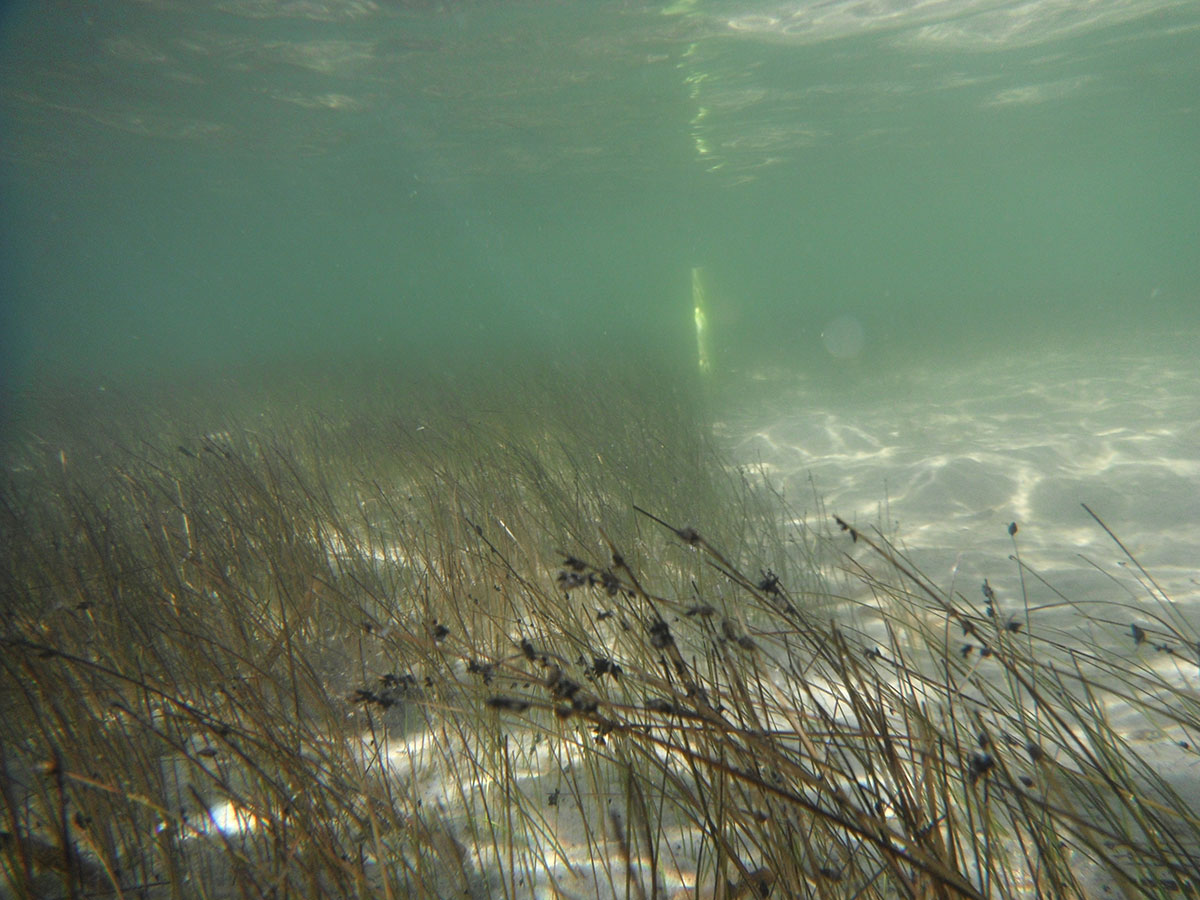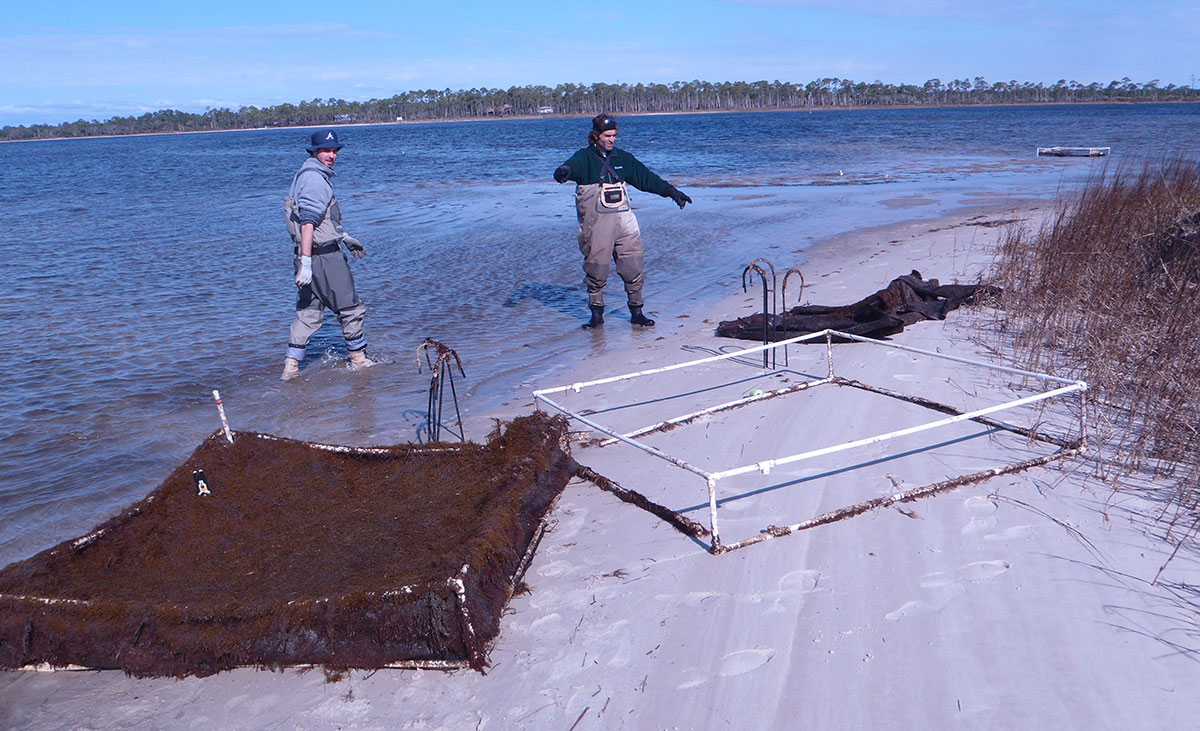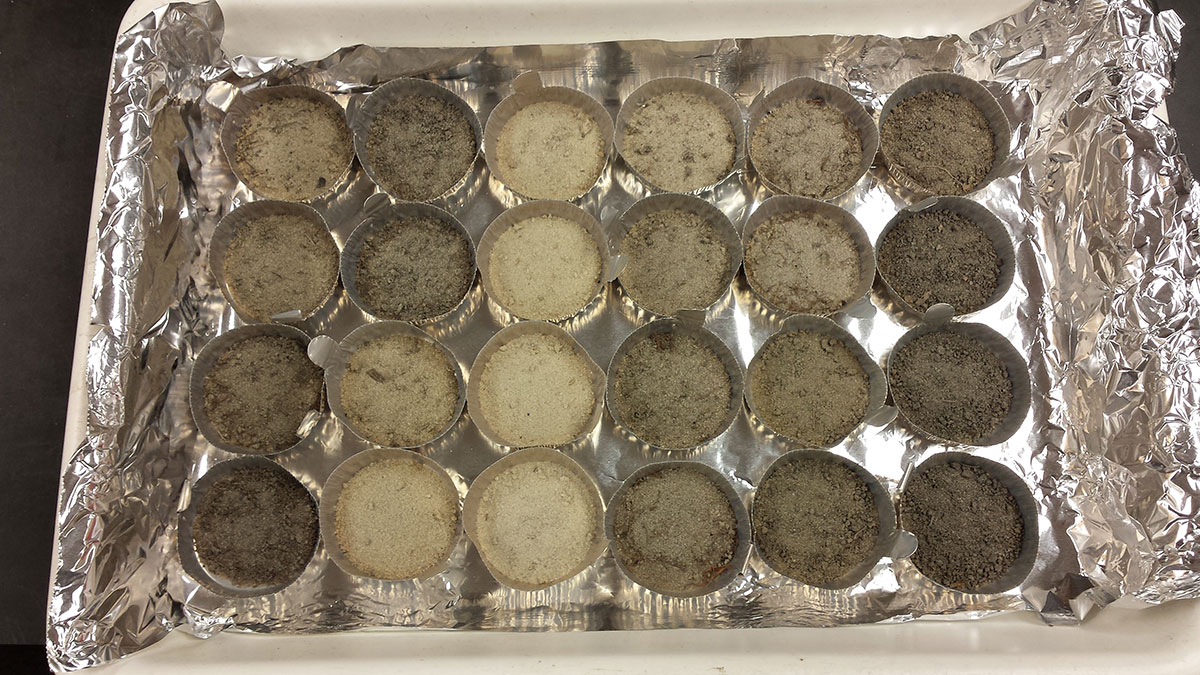
A recent study by Dauphin Island Sea Lab researcher Dr. Just Cebrian and graduate student Caitlin Wessel, and led by Dr. Stacey Trevathan-Tackett of Deakin University, expands our understanding of seagrasses and their importance to our environment.
Seagrasses provide the perfect habitat for young fishes and shrimp, and also play a globally significant role in capturing and storing carbon dioxide. Marine scientists refer to mangrove, saltmarsh, and seagrass ecosystems as “blue carbon”, because these ocean systems capture and store carbon extremely well and for a long periods of time. These seagrasses also play a key role keeping coastlines stable as they help decrease erosion.
The publication, ‘Effects of small-scale, shading-induced seagrass loss on blue carbon storage: Implications for management of degraded seagrass ecosystems’, appeared recently in the Journal of Applied Ecology. The study focused on how seagrasses mitigate the amount of carbon released into the atmosphere and erosion.

“For this study, we mimicked docks by shading areas of the coastline along Johnson’s Beach within Florida’s Big Lagoon Gulf Island National Seashore,” Dr. Cebrian explained. “We measured the quantity of carbon retained in the system before placing the shade, during the placement of the shade, and nearly a year after removing the shade.”
The lighter sediment samples collected from the study area contains less organic carbon while the darker is rich in organic carbon.
The team deployed the shade cages in June of 2013, and removed the cages in January of 2014. The results of this study showed that the seagrass in unshaded plots remained stable, while the seagrass in shaded areas died off, leaving the study plots bare.

“With the loss of the seagrasses in these areas, the quantity of sediment carbon retention decreased, meaning less carbon dioxide was being removed from the atmosphere and held within these blue carbon sinks,” Dr. Cebrian said. “What’s even more interesting is that returning to these areas nearly a year after removing the shade cages, seagrass growth was minimal.”
This study provides direct evidence that the loss of seagrass by shading decreases the carbon stored within the sediment and leads to an increase in erosion. With future monitoring of the Johnson’s Beach sites in the coming years, the researchers hope to find a recovery of the seagrass meadows, ultimately leading to an increase sediment carbon stores. However, the recovery of those seagrass meadows within a year of the study concluding was not significant.